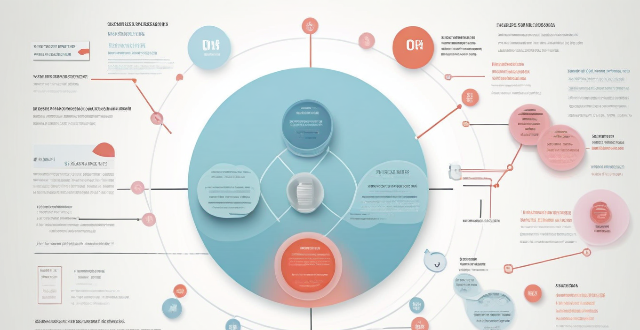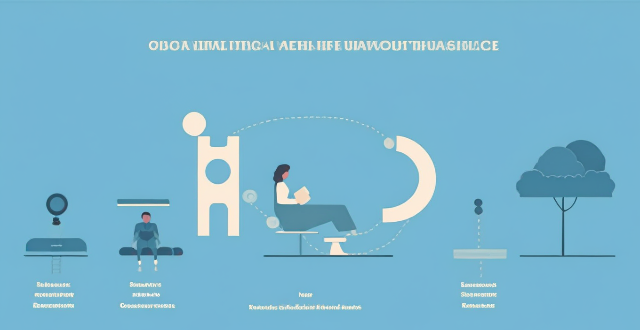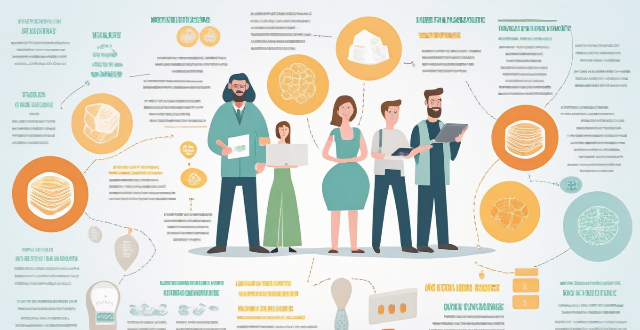Trip Vaccine

What vaccinations should I get before traveling to Africa ?
When planning a trip to Africa, it's essential to consider the necessary vaccinations to ensure your health and safety. The continent is vast, and the required immunizations can vary depending on which countries you will visit. Here are some general recommendations: - Yellow Fever Vaccine - Polio Vaccine - Hepatitis A Vaccine - Hepatitis B Vaccine - Rabies Vaccine - Meningococcal Meningitis Vaccine - Typhoid Fever Vaccine - Japanese Encephalitis Vaccine - Cholera Vaccine - Malaria Prevention It's crucial to consult with a healthcare provider or a travel medicine specialist at least 4-6 weeks before your trip to discuss your individual needs based on your itinerary, duration of stay, and personal medical history. They can provide personalized recommendations and ensure you have all the necessary vaccinations for a safe journey.

What challenges have been faced in vaccine distribution ?
Vaccine distribution faces challenges in manufacturing capacity, logistics, geopolitics, regulatory approvals, public perception, financial constraints, technology, and coordination efforts. Addressing these requires global collaboration to ensure equitable access to vaccines worldwide.

Why is vaccine equity important for global health ?
Vaccine equity is crucial for global health as it ensures fair distribution of life-saving vaccines worldwide. It helps prevent disease outbreaks, reduce health inequalities, promote economic stability, and improve overall health outcomes. By ensuring everyone has access to vaccines, we can create a healthier world for all.

How can wealthy nations help achieve vaccine equity ?
Wealthy nations can help achieve vaccine equity by donating vaccines, providing financial support, sharing technology and knowledge, improving global health infrastructure, advocating for fair distribution, and collaborating on research and development.

Is there a vaccine for COVID-19 ?
Vaccines for COVID-19: Several vaccines have been developed to prevent or treat COVID-19, including Pfizer's Comirnaty, Moderna's mRNA-1273, Johnson & Johnson's Janssen/Johnson & Johnson COVID-19 vaccine, and AstraZeneca's COVID-19 vaccine. These vaccines have been shown to be effective at preventing severe illness and hospitalization due to COVID-19, but may not provide complete protection against infection or transmission of the virus. Vaccination remains one of the most important tools we have to combat the COVID-19 pandemic.

What is the role of international organizations in promoting vaccine equity ?
This text discusses the role of international organizations in promoting vaccine equity by ensuring everyone has equal access to vaccines regardless of their socioeconomic status or geographic location. Key players such as the WHO, UNICEF, GAVI, World Bank, and WTO engage in various activities including advocacy, policy making, funding, research and development, logistics, distribution, monitoring, and evaluation. However, challenges such as political will, financial constraints, infrastructure deficits, and information disparities can hinder progress. The text concludes that overcoming these obstacles requires sustained collaboration and innovative solutions from these organizations and their partners worldwide.

How can technology be used to promote vaccine equity ?
Technology can promote vaccine equity by improving accessibility, monitoring, and distribution. Digital awareness campaigns, telemedicine services, real-time data tracking, data analytics, automated logistics systems, and cold chain management are some of the ways technology can be used to achieve this goal. By leveraging technology, we can bridge the gap between the haves and the have-nots, making vaccines accessible to all sections of society.

What is the process of vaccine allocation ?
Vaccine allocation is a crucial step in the fight against infectious diseases, such as COVID-19. It involves distributing vaccines to those who need them most, ensuring equitable access and maximizing public health benefits. The process includes determining priorities, identifying supply sources, allocating doses, distributing vaccines, and administration and tracking. By following these steps, we can ensure that vaccines are distributed equitably and effectively, helping to control the spread of infectious diseases and protect public health.

What are the side effects of the COVID-19 vaccine ?
The COVID-19 vaccine has been a topic of great interest and concern in recent months. While many people have received the vaccine with minimal side effects, others have reported experiencing more severe reactions. The most common side effects reported after receiving the COVID-19 vaccine include pain, redness, or swelling at the injection site, fatigue, fever, headache, muscle pain, nausea, rash, chills, dizziness, and joint pain. However, there have also been reports of serious side effects associated with the COVID-19 vaccine, including blood clots, angioedema, myocarditis, and Guillain-Barré Syndrome. It is important to note that these cases are extremely rare and far outweighed by the benefits of receiving the vaccine.

How does vaccine inequality impact developing countries ?
Vaccine inequality significantly impacts developing countries by affecting their public health, economy, and social stability. Limited access to vaccines increases mortality and morbidity rates, weakens healthcare systems, and leads to economic losses and limited growth. It also exacerbates poverty and inequality and can contribute to social unrest and instability. Addressing vaccine inequality is crucial for global health equity and sustainable development.

What are the latest developments in vaccine research and development ?
The text discusses the latest developments in vaccine research and development, including the creation of new vaccines for COVID-19, cancer, and other infectious diseases. It also highlights the challenges and opportunities facing vaccine researchers and developers, such as ensuring accessibility and affordability of vaccines and addressing concerns about vaccine safety and efficacy. The text concludes by emphasizing the importance of continued investment in vaccine research and development to improve global health outcomes.

What are the potential consequences of unequal vaccine distribution ?
The text discusses the potential consequences of unequal vaccine distribution, which include continued transmission and mutations of the virus, prolonged pandemic, economic disparities, educational setbacks, strain on healthcare systems, social inequality, global travel restrictions, political tensions, increased antimicrobial resistance, and mental health impact. These consequences highlight the importance of equitable vaccine distribution to effectively and efficiently end the COVID-19 pandemic.

What role do governments play in vaccine allocation ?
Governments have a crucial role in vaccine allocation, including planning and strategy development, resource allocation, prioritization and targeting, ensuring equity and accessibility, and maintaining transparency and accountability. They collaborate with healthcare providers and pharmaceutical companies to ensure a smooth distribution process, invest in building capacity within the healthcare system, determine priority groups for vaccination based on various criteria, address issues related to vaccine hesitancy and misinformation, provide regular updates on vaccine availability and distribution progress, and establish mechanisms for accountability. By effectively managing vaccine allocation, governments can protect public health and control the spread of infectious diseases.

How can technology help in ensuring equitable vaccine distribution ?
Technology plays a crucial role in ensuring equitable vaccine distribution by providing data collection and analysis tools, managing logistics, and improving accessibility and outreach. Examples of technologies used for data collection and analysis include mobile apps, GPS tracking, and cloud computing. Technologies used for logistics management include RFID tags, drones, and automated warehouses. Examples of technologies used for accessibility and outreach include social media platforms, telehealth services, and chatbots. By leveraging these technologies, we can create a more efficient and effective vaccine distribution system that benefits everyone equally.

How effective is the COVID-19 vaccine ?
The effectiveness of the COVID-19 vaccine varies depending on the type of vaccine and the population being vaccinated. mRNA vaccines have an efficacy rate of around 95% against hospitalization and death due to COVID-19, while adenovirus vector vaccines have an efficacy rate of around 66% and inactivated virus vaccines have an efficacy rate of around 70%. Older adults and people with underlying health conditions may require additional doses or booster shots to achieve optimal protection against severe cases of COVID-19. Populations with higher rates of transmission may also require additional doses or booster shots to achieve optimal protection against COVID-19.

What ethical considerations are involved in vaccine distribution equity ?
Vaccine distribution equity is a crucial issue that requires careful consideration of ethical principles such as justice, utilitarianism, autonomy, and transparency. Justice demands that vaccines be distributed based on medical need rather than wealth or social status, while utilitarianism emphasizes maximizing overall well-being by prioritizing essential workers and those who can contribute most to society. Autonomy requires respecting individuals' choices about whether or not to receive a vaccine through informed consent and voluntary participation. Transparency is essential for building trust and promoting public confidence in vaccine distribution efforts through public communication and accountability mechanisms. Overall, ensuring equitable distribution of vaccines requires balancing these ethical considerations to promote fairness, maximize benefits, respect individual autonomy, and maintain transparency throughout the process.

How does vaccine distribution impact the economy ?
This text explores the relationship between vaccine distribution and its economic impacts, including public health, labor force participation, consumer behavior, and global supply chains. It highlights how equitable vaccine distribution can shape the trajectory of economic recovery by reducing transmission and mortality rates, increasing consumer confidence and spending, stabilizing the labor market, creating employment opportunities, shifting consumer preferences towards local products and services, stimulating discretionary spending on entertainment and travel, restoring supply chains and normalizing trade through reduced tariffs and increased international cooperation. The author emphasizes the importance of recognizing these relationships and crafting interventions that facilitate robust and sustained economic upturns.

What is the role of clinical trials in vaccine development ?
The article discusses the importance of clinical trials in vaccine development, emphasizing that they are crucial for ensuring vaccine safety and efficacy. It outlines the different phases of clinical trials, including Phase I (safety testing), Phase II (efficacy testing), Phase III (large-scale testing), and post-marketing surveillance. The article highlights that each phase plays a vital role in evaluating the safety, efficacy, and long-term effects of vaccines. It also encourages individuals to participate in clinical trials to contribute to advancing medical research and improving public health outcomes.

What role does the WHO play in promoting equitable vaccine distribution ?
The World Health Organization (WHO) is a key player in promoting equitable vaccine distribution globally. It does this through various programs such as the Vaccine Introduction Programme (VIP), partnerships like GAVI Alliance, and advocacy and policy development. The VIP helps countries plan and implement new vaccine introductions, while GAVI Alliance aims to increase access to vaccines in low-income countries. The WHO also advocates for policies that support equitable access to vaccines.

What role do pharmaceutical companies play in promoting vaccine equity ?
Role of Pharmaceutical Companies in Promoting Vaccine Equity: - **Introduction**: Discusses the importance of vaccines and the challenge of vaccine equity. - **Development and Production of Vaccines**: Covers research, development, manufacturing, and quality control measures. - **Availability and Affordability of Vaccines**: Includes pricing strategies and partnerships with governments and NGOs. - **Improving Access to Vaccines**: Discusses global health initiatives and technology transfer/capacity building efforts. - **Conclusion**: Reinforces the critical role of pharmaceutical companies in promoting vaccine equity.

How long does it typically take to develop a new vaccine ?
Developing a new vaccine is a complex and time-consuming process that involves multiple stages of research, testing, and approval. It typically takes several years to develop a new vaccine, with the duration varying depending on factors such as the type of pathogen being targeted, the availability of existing research, and regulatory requirements. The process includes research and development, preclinical testing, clinical trials in humans (Phases I, II, and III), regulatory approval, and manufacturing and distribution.

How can we ensure fair vaccine distribution globally ?
The text discusses the importance of ensuring fair vaccine distribution globally, emphasizing collaboration among nations, the role of international organizations, engagement of pharmaceutical companies, capacity building in developing countries, transparency and accountability, legal and ethical frameworks, and flexibility in approach. It suggests strategies such as sharing resources, knowledge exchange, coordination by organizations like WHO, monitoring distribution, fair pricing by companies, technology transfer, infrastructure development, training healthcare workers, open communication, public reporting, international agreements, ethical considerations, adaptive strategies, and continuous assessment to achieve equitable distribution. The conclusion highlights the need for a multifaceted approach involving collaboration, coordination, capacity building, transparency, and adaptability to ensure fair vaccine distribution globally.

What is the process for obtaining approval from regulatory agencies for a new vaccine ?
The process for obtaining approval from regulatory agencies for a new vaccine includes pre-clinical trials, phase 1, 2, and 3 clinical trials, submission to regulatory agencies, and post-marketing surveillance. This process ensures that the vaccine is safe and effective before it is made available to the public.

How can we address the issue of vaccine hesitancy in distribution efforts ?
Vaccine hesitancy poses a significant challenge to public health efforts aimed at controlling and preventing infectious diseases. To address this issue, strategies such as education and information dissemination, engaging with community leaders and influencers, tailoring messaging to different groups, leveraging healthcare workers, addressing misinformation, making vaccines accessible and convenient, showcasing success stories, and implementing policy measures can be employed. By employing these strategies, higher participation rates in vaccination programs can be ensured, contributing to herd immunity and the overall health of the community.

How do I plan a backpacking trip on a budget ?
This guide outlines how to plan a budget-friendly backpacking trip by defining a realistic budget, choosing an affordable destination, traveling during off-peak season, opting for budget accommodations, cooking own meals, using public transport, engaging in free activities, packing light, staying connected affordably, and not skimping on trip insurance. It emphasizes the importance of research, flexibility, and openness to new experiences for a memorable adventure without financial strain.

Is it possible to create a universal flu vaccine that works against all strains of the virus ?
Is it possible to create a universal flu vaccine? The influenza virus is highly adaptable and mutates rapidly, making it challenging to develop a vaccine that works against all strains. However, recent advancements in research and technology have brought us closer to achieving this goal. Strategies for developing a universal flu vaccine include targeting conserved proteins within the virus, using molecular mimicry to trick the immune system into recognizing multiple strains, and utilizing mRNA technology. While there may still be obstacles to overcome, the potential benefits of a universal flu vaccine make it an exciting area of research.

Is it safe to drive at night during a road trip ?
Driving at night during a road trip can be exhilarating but also risky due to reduced visibility and potential for drowsiness. To ensure a safe journey, consider safety precautions such as checking headlights and fog lights, taking breaks every two hours or 100 miles, being extra vigilant in areas with wildlife, maintaining vehicle condition, using technology wisely, being prepared for emergencies, checking weather conditions, obeying legal requirements and regulations, and getting adequate sleep before starting the trip. By following these guidelines, you can help ensure a safer journey under the stars.

What are the best routes for a Canadian road trip ?
Canada is a land of diverse landscapes, from the rugged mountains to the vast coastline. A road trip across this beautiful country can be an unforgettable experience. Here are some of the best routes for a Canadian road trip: - The Trans-Canada Highway (Route 1) - The Cabot Trail, Nova Scotia - Icefields Parkway, Alberta - Dempster Highway, Yukon - Pacific Rim Highway, British Columbia

How long before my trip should I buy travel insurance ?
Travel insurance is a crucial component of any trip, offering coverage for unexpected events such as medical emergencies, trip cancellations, and lost luggage. The best time to buy travel insurance depends on various factors, including the timing of your purchase, trip details, personal situation, and research. Timing matters when buying travel insurance. It's recommended to buy early for peace of mind, better pricing, and more options. However, waiting too long can increase the risk of forgetting, limit options, and create coverage gaps. Trip details such as destination, length of stay, and activities should also be considered. Personal situation factors like health status, financial protection, and travel companions' needs should also influence the timing of your purchase. Practical steps include researching policies, comparing online, reading reviews, consulting a broker, completing an online application, confirming details, and keeping records. Ideally, travel insurance should be purchased at least a few weeks before the trip to ensure adequate coverage and avoid last-minute stressors.

What are the best practices for packing light for a road trip adventure ?
Packing light for a road trip adventure is key to enjoying the journey without being weighed down by excess baggage. Best practices include planning outfits in advance, using packing cubes or compression sacks, rolling clothing instead of folding, sticking to a color scheme, opting for travel-size toiletries, wearing bulkiest items on the plane, and limiting accessories. By following these tips, you can ensure an enjoyable and stress-free road trip adventure.